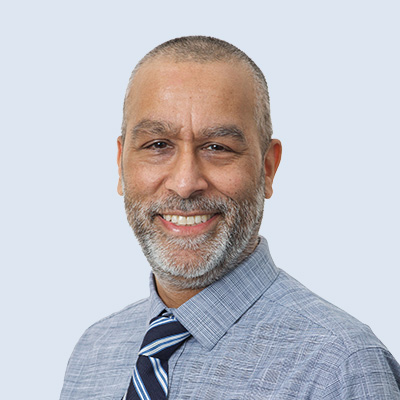Raj Sharan: What these companies are also doing is they’re not forgetting all the lessons learned during COVID. They’re continuing to target niche audiences online. It’s more relevant messaging.
Intro: It’s time for another episode of the Alexander Group Revenue Growth Model Podcast. Welcome and enjoy.
Arshad Carim: Hello everyone. Arshad Carim here, principal with the Alexander Group. And I’m here with my colleague Raj Sharan. We’re here today from our life sciences and analytical instruments practice. Raj and I are both leaders in that practice, and we’re here to talk about the topic of customer centricity and what we’re seeing from our latest research and our client work, and some of the examples and trends around, what does customer centricity mean when we’re talking about companies in the space and what are they doing about it. So Raj, I’m going to ask you to get us kicked off here. We’re seeing companies really shift their mindset quite a bit from a more siloed, product-centric approach in many cases, to how do we think about customers more holistically. We’re seeing that, certainly on the digital side, and we’ve talked about that in some of our other podcasts here. But today, let’s talk about a couple of areas where customers are focusing from a marketing perspective, from a customer coverage perspective. And I know you have some comments there about account management and how we’re seeing some of the roles and focus areas evolving as well as an insight-driven approach that companies are taking. So I’m going to hand it over to you to start talking about that marketing aspect of customer-centricity.
Raj Sharan: Yeah. Thank you, Arshad. Yeah, exactly. With marketing, I think the big thing that companies are doing right, is that they’re meeting the customers across their buyer’s journey. I think that’s really the key theme. A key post-COVID trend is that lab managers are balancing time in the lab. Say they’re in the lab Tuesday to Thursday and then they’re remote Monday and Friday. So from a buyer journey perspective, this implies a continued emphasis on the online experience of these lab managers. But you want to make sure you have some outcomes and applications and workflow focused content that is very, very relevant to these lab managers. And the content is shared by various channels beyond just the website. Think of research sites where these lab managers may be spending time. Social channels such as WeChat and in China is very, very important. In one study, 80% of prospects made an early determination of purchase based on research before they even talk to a sales rep. So marketing function is very important, making sure you’re providing them the right information along the early buyer journey to evolve where their buyers are. So that part is very, very important.
Arshad Carim: Yeah. So Raj, it sounds a lot like, maybe in the past there was a lot of focus on whitepapers and sort of fixed interactions, publications and other aspects of accessing information. Now I think these buyers that we’re handling and dealing with are looking for snippets of information when they’re available, when they’ve got time. It might be on the weekend, it might be when they’re remote. How do we reach them in a more seamless way, both online and offline, right, as they’re interacting and sort of living in this hybrid, virtual and in-person world in the lab.
Raj Sharan: Exactly, Arshad. And I think you bring up a really good point about the online versus the offline experience. And this is how the companies are also thinking about in-person events. I think that’s a big part of it. I think previously in-person events were really the big place where these companies used to go to meet their prospects and customers. And during the COVID time, of course, a lot of those in-person events were canceled. But they’re starting to come back, and companies are thinking how to best leverage in-person events. So most companies are headed back to the big events which serve as an awareness driver. However, what these companies are also doing is they’re not forgetting all the lessons learned during COVID. They’re continuing to target niche audiences online with more relevant messaging. Right. To your earlier point about having relevant information for example, you can demo their product, you talk about specific applications and workflows, and the conversation has shifted away from just pure technical specifications of instruments. Of course, that’s still relevant, that’s important, but customers care more about their outcomes. And you have the right resources online to target the right audience with the right messaging. Now, this shift requires companies to juggle their budget more effectively, right? That may imply they may drop some of the smaller in-person events in favor of webinars that they have more control over.
Arshad Carim: Well, Raj, I’ve been hearing, too, that companies are being much more purpose-driven about those big in-person events or conferences or tradeshows. Whereas we may have sent an army of people in the past, now maybe it’s a core set of folks that we send today and then we have access to deeper technical experts or other people through virtual means. Right. Again, bringing this hybrid approach. So maybe I can call up an expert if I’m talking to a customer at a tradeshow that can beam in over an iPad or an iPhone and provide that expertise in real time to a customer versus having to be there and incurring all the costs. And that sort of more purpose-driven approach, I think, is probably the way we’re going to see a lot of companies approaching these events and getting more ROI out of them.
Raj Sharan: Yeah, makes total sense. And especially because then you can have the right expertise to have the discussion with the prospects walking by you as opposed to, there’s only so many people you can bring to any conference. You will never be able to get all the expertise that’s needed.
Arshad Carim: Great. Well, let’s move on to coverage because I know you have some things to say about commercial and sales coverage and how that’s evolving in this customer-centric transition and transformation that companies are making. What are you seeing there?
Raj Sharan: Yeah, of course, Arshad. The big change that we’re seeing is a focus on total account management supported by specialists. Now, what does that mean? Companies are realizing that buyers do not want 4 to 5 product-focused sellers from one company visiting them. It leads to a lot of confusion. They’re like, well, who is my “account manager” to reach out to when they have questions? So what companies are doing is they’re shifting to a model with one account manager who is supported by a cast of specialists. Companies are making a big investment in the field application scientist role, right, so that the discussion is more around the customer outcomes, applications, workflows. So this continues where we started with the buyer journey, with marketing, with content. Now their needed discussion during the sales process with the customer is, you have the FAS, they’ll conduct the pre-sales demo. And after the sale in many situations, the FAS may also help with the instrument install and familiarization. And then this ensures, right, you’re designing a coverage model that’s deliberate about using the FAS in both the pre and post-sales role so that in the adoption phase, the customers are quickly seeing their investment value.
Arshad Carim: So let me summarize here and see if I got this, Raj, what you’re saying and I think I’m seeing it too. If I’m the customer, right, I’ve got my account manager who’s kind of looking after all my needs, you know, broadly, how do I interact with this vendor, this company. And they’re thinking about everything I might need. And then from a more technical or application or product aspect, I can go to this person who’s going to give me continuity from the selling process to after I actually purchase something. They’re going to help make sure that I actually get the outcome that I’m looking for as a customer. And that’s where we’re seeing a lot more focus on, what are the workflows that those customers are trying to run and get an outcome from, right. Is that what you’re saying?
Raj Sharan: That’s exactly right. And then this helps drive future consumable sales, right? So imagine if the customer is quickly able to onboard and see a lot of value from the instrument that they purchased from a company. They’re more likely to start using it more and potentially influence other users in the lab to use it, and that drives future consumable sales. Now, at the same time, the FAS is in the lab helping talk about the existing instrument. They’re able to cover, identify additional cross-sell opportunities. So they’ll bring back the account manager and say, hey, this seems like an opportunity for you to sell more. And so there’s a great opportunity where you provide value for the customer but also uncover additional opportunities for sales.
Arshad Carim: So get that recurring revenue flywheel going as soon as possible.
Raj Sharan: Exactly.
Arshad Carim: That’s good for the commercial leader, right? All right. Well, I know we have one more quick topic to cover here today, and that’s about insights and how we’re helping use those insights with our customers. So let’s chat about that real quick, Raj.
Raj Sharan: Sure thing, Arshad. One thing that companies are making a big investment is a database recommendation engine. So think like an account potential model that uses various sources of data that the company may already have or it may decide to purchase. And they’ll feed insights to the account manager. Companies already have information such as the install base, what instruments have they sold to customers or even other competitor install information. They have tried to sell. They may have some lost opportunity data, prior sales data. So you combine all of that in an account potential model and you drive insights to the account manager so that the account manager is having the conversation that matters the most to customers. So it’s all about driving insights that enable the account manager to be more successful and make sure you’re having a discussion with the customer that’s more relevant to them.
Arshad Carim: So harness all the information I have about a customer to really drive a very meaningful, timely conversation with that customer about what they’re trying to do that may lead me down the path of another opportunity or sale as it may happen.
Raj Sharan: That’s exactly right. And it’s early days. You know, it takes a while to build a really robust model and engine. Definitely a few of the companies who have made that investment are seeing early success with these models.
Arshad Carim: Awesome. Raj, it’s been great chatting with you today about customer centricity with our life sciences and analytical instruments clients and community out there. Thanks for joining us and listening today. If you’d like to learn more, please visit our website at alexandergroup.com and check out our Life Sciences Practices page. We’d love to share more and look forward to the next time. Thanks, everyone.
Learn More About the Life Sciences Practice:
How We Help
Insights
Leadership Events
Podcast Channel
Additional Episodes:
Life Sciences Study Findings – PT2
Life Sciences Study Findings – PT1
Talent
Customer Centricity
The Digital Journey
FY22 Commercial Priorities
Catalysts for Commercial Change



